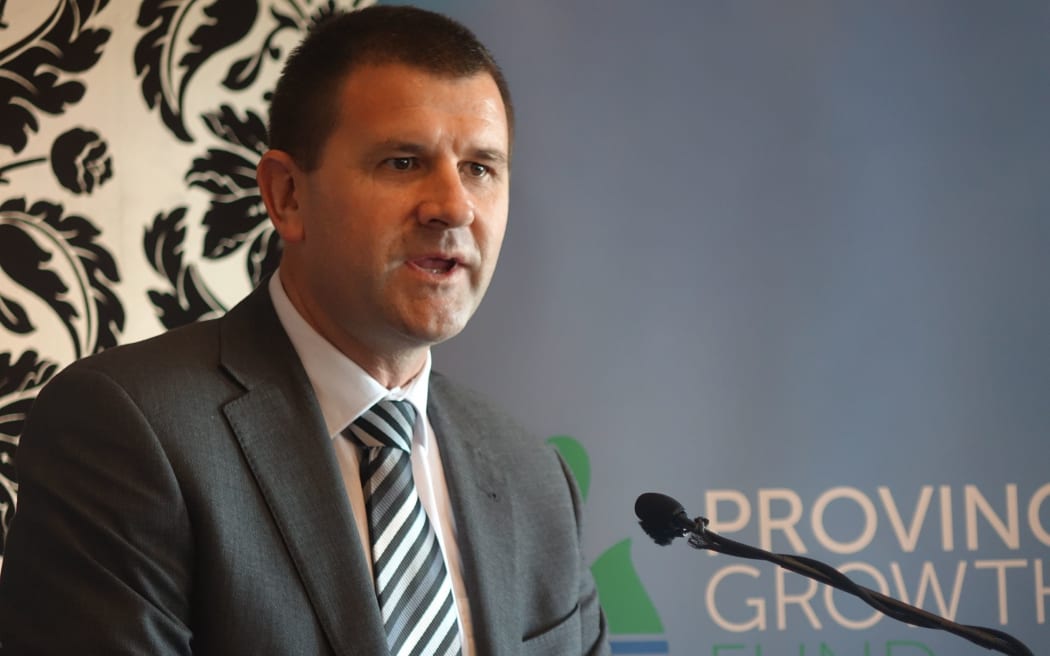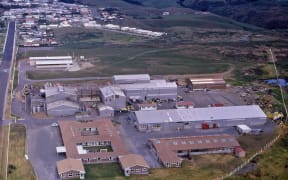A $3 million clean-up operation to remove highly toxic dioxin from the New Plymouth wastewater treatment plant has sparked calls for an investigation into where else the compound may be lurking.

The Paritutu agrochemical plant in 1968. Photo: CC / Phillip Capper
The council is removing contaminated sludge from a decommissioned lagoon at the plant which is being dried and bagged before being transported to a specialist landfill.
Last month mayor Neil Holdom put pressure on agri-chemical company Corteva to test its controversial Paritutu plant for dioxin contamination before it sells up and leaves.
Now he's revealed council is using $3 million from the government's Three Waters Stimulus fund to remove dioxin at its own wastewater treatment plant.
"We were advised of it by management a couple of years ago when they advised that we needed to do this work.
"It's one of those legacy sites that are around the country, but yeah we were advised there was dioxin in there and that it was something we should attend to. It's been sitting there for 30 years."
Holdom said it was not clear that the dioxin came from the Corteva plant - that under previous management made the herbicide 2, 4, 5-T containing the toxic dioxin TCDD.
"One of the comments that was made to us is that it's difficult to determine where it came from, but tests had proven that there were traces [of dioxin] and my understanding is that they are actually quite low level traces, but as I've said we've dealt with that site."

New Plymouth District mayor Neil Holdom. Photo: RNZ / Robin Martin
Tests at four spots in the lagoon in 2016 were well below the limit for risk to human health of 1400 parts per trillion, but they exceeded the environmental risk limit of 4 parts per trillion.
The test results ranged from about 89 to 128 parts per trillion.
Dioxin researcher Andrew Gibbs said it was the first he had heard about contamination at the wastewater plant, but he was not surprised.
"It's all been a bit hush hush from where I'm standing and we'd really like to see what types of dioxin are in there.
"You know, is Dow the source of this? Because at the end of the day we've already paid to repair our sewers twice because of their waste going through them and I think the public have a right to know if this waste came from Dow or not."
Gibbs said it was not only the wastewater plant and Paritutu site that needed testing.
He wanted the council to investigate all the historical dump sites used by Ivon Watkins Dow which made 2, 4, 5-T at Paritutu from 1960 through to the 1980s.
He was particularly concerned about a former dump at Ngahoro.
"It's 100m from the coast and the level of dioxins down there was 33 times the grazing limit in 2001 and we've often put forward well look why don't they just plant flaxes and fence it and get the stock off it.
"So there appears to be a really different approach to the Ngahoro dump site and the wastewater treatment plant where they are digging it up and taking it away."
Associate Professor Dave McBride of Otago University studied dioxin levels in the blood of Dow workers and contamination at the former Fruitgrowers' Chemical Company in Mapua.
He said an investigation of former dump sites made sense.
"Well they're reasonably sure from photographs where those potential dump sites were, so it should be relatively straightforward because I believe there are aerial photographs.
"If there's some evidence I would say that's fair enough."
Professor McBride was less convinced that the contamination at the wastewater treatment plant came from Paritutu.
"Run off from the site possibly, but after the 2, 4, 5-T was all drummed up and ready to go there shouldn't have been any significant releases.
"Unless of course there was rusting drums or something on site which was somehow finding it's way into the drainage and wastewater system, but that seems unlikely."
New Plymouth mayor Neil Holdom said he was open to dioxin testing of dump sites used by Ivon Watkins Dow.
Over the last two years council staff have examined 11 former dumps sites identified as at risk from erosion.
They have made sure these are safely contained, monitored and checked for any visible leachate, but found no issues.
The council said because many people and businesses used these sites, it was not possible to specify where particular waste came from.



